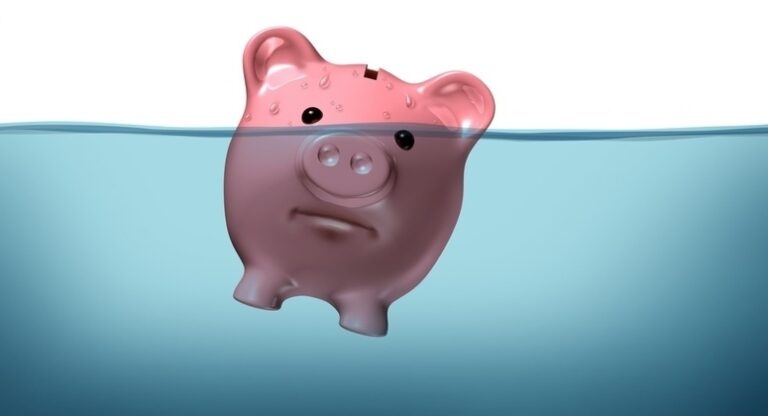10 Tips to Help Break The Debt Cycle

Just like visiting the dentist or having your car towed, the debt cycle can add unwanted stress to your life.
Taking on some debt can be beneficial, allowing you to invest in your future by getting a college education or buying a home. But every debt you borrow will eventually need to be repaid. In some cases, the repayment process can seem daunting.
Mortgages, student loans, and car loans can add up to a considerable portion of your monthly expenses. Add in credit card debt and unexpected financial emergencies, and it could feel like your debt is ever-growing. But don’t fear, with a few tips and some strategic planning, you can organize your finances and help to break the debt cycle for good.
Avoiding Credit Cards
Credit cards can be a great tool to earn rewards points and track your spending, but only if you are paying them off in full every billing cycle. Credit cards can make it easy to spend money you don’t have, since you don’t feel the immediate effects of the money leaving your account or the cash leaving your hand.
You don’t have to cancel your cards, since that may negatively impact your credit score . You can store them somewhere you won’t have easy access to them, or even cut them up so you’re not tempted to use them. If you’ve been using your credit cards to pay for your daily expenses and not paying the bill at the end of the month, it may be time to review your spending and see if there are places you can cut back.
Considering Interest Before Charging Purchases
When you’re shopping it can be easy to get swept up in finding a great deal and put it on a credit card. Before you do, you may want to pause and think about what it might cost you in interest.
If you aren’t able to pay off your credit card bill at the end of the month, your sweet deal could end up costing you a lot more than what you originally paid for it.
Before you swipe your card, consider taking the time to evaluate the purchase, the price, and what it may cost you in interest for as long as it will sit on your credit card. You can use a tool like our credit card interest calculator to estimate how much interest you will pay on your credit card debt.
Revisiting Your Shopping Habits
It might be time to take a look at your shopping and spending habits. You can start by reviewing how much money you are spending each month on things like food, clothes, and entertainment. Be honest with yourself and see if there is any opportunity for you to cut back.
When shopping for the holidays, birthdays, or other events, set a list of what you plan to buy and a budget to match. This can help you get exactly what you need without going overboard.
Differentiating Between Wants and Needs
Is that new pair of shoes a want or a need? Latest video game? A night out on the town? As you’re trying to get ahead of the debt cycle, you might want to evaluate your wants against your needs. For example, before you make a purchase, carefully think about whether you need it, or if it’s just a want. If it’s something you can live without, maybe holding off is wiser.
Breaking out of a long-term debt cycle requires discipline and determination. While skipping out on wardrobe upgrades or the newest tech gadgets now can seem like a huge sacrifice, when you start making headway on your debt repayment, odds are you’ll feel the reward.
Saving an Emergency Fund
One of the biggest reasons people fall into the debt cycle is their failure to plan ahead. You can’t predict the future, but you can do your best to prepare for it. For example, say your car breaks down and you’re unable to pay for repairs upfront.
Deferring the cost on your credit card can send you deeper into the debt cycle. On the other hand, having an emergency fund on hand can help you prepare for unexpected costs and events.
If you don’t have anything saved up, you can try starting with a windfall—like a bonus at work or your tax refund. You can put this money in a dedicated emergency fund savings account (or another cash equivalent, if you prefer).
Then each week, you can try to save a specified amount of money in your emergency fund. Even saving just $10, $15, or $20 a week can help you be more prepared when a financial emergency strikes. It can be good to aim to save somewhere between three and six months’ worth of living expenses in your emergency fund.
Reviewing Your Credit Card Statements and Setting a Budget
Credit card debt prevents many people from breaking the debt cycle. Taking action by printing out your credit card statements and reviewing them closely can be a great first step toward getting credit card debt under control. You can also make note of your expenses and see exactly where all of your money is going.
Are you spending hundreds of dollars a month on take-out? Have you been giving in to the convenience of Amazon Prime? Are there a few subscriptions you enrolled in but have since stopped using? Be honest with yourself as you review your spending habits. Note any areas where you can adjust or cut back your spending.
After you’ve had a reality check on your spending, you might want to set up a new budget. You can start by tallying your monthly income and your monthly expenses. Don’t forget to include saving in your budget and set up new limits for your discretionary spending.
Accelerating Your Repayments
If you’re paying off debt, one way to speed up your repayment is paying more than the monthly minimum. Making additional payments on your debt each month could not only help you eliminate your debt more quickly, it could also potentially reduce the money you spend in interest in the long term. Even just $25 a week could have an impact on your repayment.
There are a couple of debt repayment strategies that could help get you back on track. First, there is the debt snowball method. This method encourages you to start focusing on your smallest debt, regardless of the interest rate. While making the monthly minimum payments on all of your debts, you would throw as much extra money as possible toward the smallest debt.
Once it’s paid off, you’d take the minimum payment you were paying on that first debt and add it to the minimum payment on your next-smallest debt. Repeat the process and let the snowball work its magic. While this method may not reduce the money you spend in interest, the rewarding feeling of seeing your debt dwindle could encourage you to stick with your repayment plan.
Another debt repayment strategy is the debt avalanche, or debt-stacking method. Unlike the snowball method, which is structured around behavior and motivation, the avalanche method is about streamlining your debt repayment so that you save the most money on interest. It can require more discipline, but keeping track of how much you are saving in interest can be a great motivator.
With the debt avalanche method, you would make a list of all your debts by order of interest rate, highest to lowest. While making your minimum monthly payments on all the debts, “attack” the highest interest rate loan with as many extra payments as you can. For extra motivation, you can use an extra payment loan calculator to keep track of how much you’re saving in interest.
Living within Your Means
With all the fancy gadgets, cutting-edge technology, constant advertisements, and the rise of social media, it can be easy to get swept up in having the best and fanciest of everything. But living in debt to sustain that can ultimately add stress to your life. You can rise above this by living within your means.
Conventional wisdom is pretty straightforward: don’t borrow more than you can afford. Before you borrow, review your budget and understand how much you can realistically afford to spend on a given item.Then stick with what you already determined you can pay.
Getting a Side Hustle
Another great way to help end the debt cycle: find some extra income by getting a side hustle. You could u money you earn from your new side gig to make extra payments on your debts. Not sure where to start? Sometimes it’s a straightforward as taking a look at your skills and interests and seeing where you may be able to find an extra job or make some passive income.
From driving for a rideshare to freelancing as an editor, or even selling your crafts at an online marketplace, with a little legwork, you could find a side job that you love, while also speeding up your debt repayment.
Consolidating Credit Card Debt with a Personal Loan
If you’re currently living in debt, it can feel like there is no way out—but with some strategic planning and a bit of discipline, you may be able to get out from under it. One option to help you repay your debt is a consolidation loan.
A debt consolidation loan is type personal loan you could use to consolidate other sources of debt, such as credit card debt. If you’re repaying a number of high-interest debts, a consolidation loan could help you get your repayment plan on track, and lower your overall interest rate which could reduce the amount you spend in interest, depending on your loan term.
When you take out a debt consolidation loan with SoFi, there are no origination fees or prepayment penalties. If you’re ready to see how a debt consolidation loan from SoFi can help you break the cycle of debt, you can apply easily online and get a rate quote in less than two minutes.
Disclosures:
The information and analysis provided through hyperlinks to third party websites, while believed to be accurate, cannot be guaranteed by SoFi. Links are provided for informational purposes and should not be viewed as an endorsement.
The tips provided on this website are of a general nature and do not take into account your specific objectives, financial situation, and needs. You should always consider their appropriateness given your own circumstances.
Disclaimer: Many factors affect your credit scores and the interest rates you may receive. SoFi is not a Credit Repair Organization as defined under federal or state law, including the Credit Repair Organizations Act. SoFi does not provide “credit repair” services or advice or assistance regarding “rebuilding” or “improving” your credit record, credit history, or credit rating. For details, see the FTC’s website .
SoFi can’t guarantee future financial performance.
This information isn’t financial advice. Investment decisions should be based on specific financial needs, goals and risk appetite.
Neither SoFi nor its affiliates is a bank.
SoFi MoneyTM is offered through SoFi Securities, LLC, member FINRA / SIPC . Advisory services offered through SoFi Wealth, LLC, a registered investment advisor.
SOPL18115
This post is originally on SoFi.






